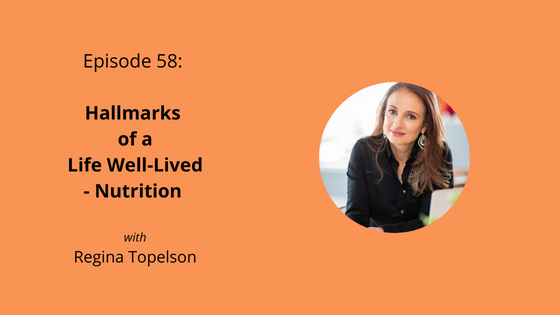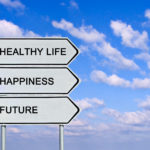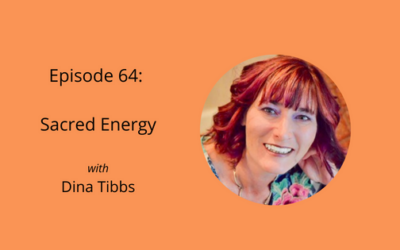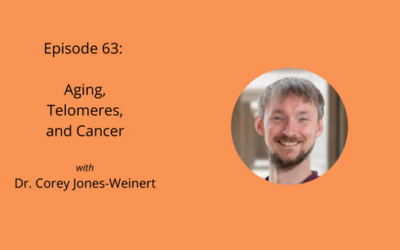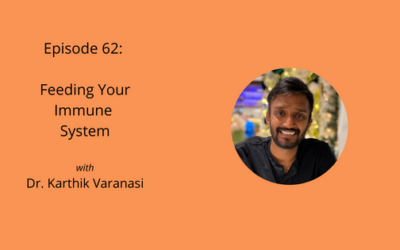This week I thought it would be good to take a deep dive into the tenets of lifestyle medicine and how they apply to cancer prevention, or prevention of recurrence.
I thought of this while reading an article on the “hallmarks of cancer”. Basically, six to eight things a cancer cell has to be able to do in order to survive. What are those things? They include things like mutations, the ability to sustain uncontrolled replication, the ability to supply its own nutrition (angiogenesis), and the ability to co-opt the immune system to help it. This is a major simplification of a very long and serious article.
And while I was reading it, I thought, okay, but what can anyone, myself included, do to stop the process or affect it in any way? We don’t have to be sitting ducks right?
The hallmarks of lifestyle medicine.
That made me think of the tenets of lifestyle medicine. An approach to provide a solution to the chronic diseases that are the top conditions plaguing Americans and many others worldwide – heart disease and cancer, number 1 and number 2 respectively. And experts say cancer may soon outpace heart disease as number one!
Just to put it in perspective, cancer is the second leading cause of mortality (death) in the United States and is equal to more than the next five causes of mortality combined! Including chronic lower respiratory disease, stroke, accidents, Alzheimer’s, and diabetes. What are the major non-genetic factors contributing to all these deaths? The top culprits are tobacco, diet and activity patterns (or lack thereof), and a somewhat distant third, alcohol.
Now, you might be thinking, isn’t this data old? Didn’t we know this a decade ago? Yes, we did, but the point here is that the numbers haven’t changed, they’ve only gotten bigger and as I mentioned earlier, cancer is catching up to heart disease in terms of mortality rates. Maybe what that means is people are getting smarter about how to avoid heart disease. Maybe we’re getting better at treating it and less people are dying from heart attacks, which would be a positive thing. Or maybe…. Cancer is on the rise and that is a very definite negative thing.
Hallmarks that contribute to chronic illness.
You might be asking, what are the things that contribute to the number 1 and number 2 killers of Americans? The answer to that is hyperlipidemia, hypertension, overweight and obesity, tobacco use, physical inactivity, stress, unhealthy diet, and diabetes. All but the first two also contribute to cancer. All are under your control.
One question I get asked all the time is, what do I need to do to lose weight? As a dietitian, that’s a perfectly normal question to hear. The answer is not as simple. Just to give you an idea, comparing obesity maps of the United States from the years 1990, 2000, and 2010, there were 10 states that had less than 10% obesity in 1990. By 2000, there was only one state in the 10-14% range, and by 2010 there was not one single state in the US with obesity less than 20%. That is an actual translation of one in five people.
Our standard way of addressing these issues – surgery and drugs – pseudo work. They work sometimes, for some things, not others. The doctors who work in these fields will tell you they are frustrated too. Cardiac surgeons, oncologists, and endocrinologists don’t always have all the tools and all the answers they would want. So what then, is the answer?
Adopting the hallmarks of lifestyle medicine for a life well-lived.
Well, in my opinion, self-care is the answer. I don’t mean bubble baths, though that is not off the table. I mean concrete, evidence-based solutions to address chronic illness. The tenets of lifestyle medicine all fall within your control.
And may very well have the biggest impact/effect. I’ve talked about them before, I’ve interviewed experts on each topic. The tenets of lifestyle medicine are nutrition, physical activity, stress management, sleep, relationships, and the avoidance of toxins. I have added two of my own – spirituality and living a life of purpose. I think these eight are “hallmarks” of a life well-lived.
Let’s start with nutrition. Several years ago, US News and World Reports polled experts in the field of nutrition and asked them to rate forty different diets. They rated the Mediterranean Diet as the healthiest diet for humans. Others have tried to dispute it, but the evidence is pretty strong (and keeps mounting) that it actually is health-promoting for humans, more so than other diets.
The healthiest diet for humans.
What is the Mediterranean Diet? It is the dietary pattern observed by most residents who live bordering the Mediterranean Sea. It turns out that encompasses several countries. What they all have in common is an emphasis on food eaten close to its source, relying mostly on vegetables and fruit (plant-based), including nuts, seeds, legumes, and whole grains.
What I’ve also noticed is a reverence for the food. It’s mindfully picked and prepared and served with pride. There is less processing and less of a “throw-away” culture mentality, and so the food means something.
A meta-analysis (the gold standard of comparing studies) of the Mediterranean diet found that adherence to this way of eating reduced overall mortality by 9%, mortality from heart disease by 9%, from cancer by 6%, and from Parkinson’s or Alzheimer’s by 13%.
But recent studies are showing that it’s not just being plant-based that’s important, it’s the quality of the food that matters equally, if not more. A recent study from France showed that following a healthy plant-based diet lowered a woman’s risk of developing breast cancer by 14% while an unhealthful variation – still plant-based, but relying on refined grains, fruit juices, sweets, desserts, and processed plant foods – raised her risk by 20% [Shah]. None of the women in the study were vegetarian or vegan, but did adhere to a mostly plant-based dietary pattern.
Nutrition recommendations for cancer prevention.
The American Institute for Cancer Research puts out a publication every five years advising Americans, in a similar fashion to the Dietary Guidelines, about behaviors that can reduce your risk of developing cancer – any kind. Out of 10 recommendations, seven are related to what and how we eat. That’s 70%!
Their recommendations are to maintain a healthy weight, eat a diet rich in whole grains, vegetables, fruits, and beans, limit red and processed meats, limit “fast” foods, and other processed foods high in fat, starch, or sugar, limit sugary drinks, limit alcohol, and breastfeed your baby (if that applies). Seven. Seven recommendations based on what and how we eat. Why? Because these seven have the greatest impact on your health.
The caveat here is that these are the factors you can control. You can’t control genetics, height, or onset of menses, important factors in developing breast cancer. But of the things you can control, I’d say the recommendations above are significant. And you don’t have to just take my opinion – there are many studies to prove it!
The World Cancer Research Fund found that up to one-third of all cancer cases in the United States could be prevented by lifestyle changes including that of diet. AICR and the Dietary Guidelines for Americans recommend at least 5 servings of fruits and vegetables per day. If you have or have had cancer that number should be between 8-12 servings per day. But a 2014 weekly government report showed an average of 1.6 servings of vegetables per day. The highest consumption in California, Oregon, and New Hampshire. What does that say for the rest of our country?!
The guidelines can be looked at both specifically and in a broad fashion. They tell you what to eat, fruits and vegetables, but leave it up to you to choose which ones. The goal here is to not get caught up in the details. You don’t need to start counting 5 mg of this and 13 mcg of that. A diet full of healthy foods and a variety of them should provide all the nutrients you need.
Are there certain things you should avoid though?
Again, going back to the guidelines, limit red and processed meat, fast and highly processed foods, sugary drinks and foods with excess sugar, and foods that are toxic, like trans fats. Recognize that an apple is healthier than a slice of apple pie. It just is. But it doesn’t mean you can never have it, just not every day.
And my favorite question of all time is, where do you get your protein? My answer? The same place your protein gets its protein. Cows don’t eat other cows. Same for all other animals. They’re not cannibals. And yet, they grow big and strong from eating grass. Hence the term, grass-fed. Also, cows don’t have heart disease or diabetes.
The reality is, you don’t need as much protein as you think. I did a video and wrote an article on my blog about protein. I do want to make two points, though. One, studies have shown there is no difference in the quality of protein from animals or plants. They’re both high quality. As long as you eat a variety of protein-containing foods you will get all the protein building blocks you need. And second, lots of people think you need to eat animal protein to get calcium. However, plant-based milks have one and a half times the calcium dairy milk does.
Okay, finally let’s get into the nitty-gritty of what this all really means. Because you want to increase your healthspan (the number of healthy years you live), not just lifespan (the total years you live). No one wants to spend the last one to two decades of their life unhealthy.
How much food are we talking about here?
I’m going to start with protein. The recommendations are 0.8 grams per kg of weight. So if you weigh 150 pounds, that is 68 kg. And the amount of protein you need is 34-54 grams of protein per day. For the average person, this is it. If you’re a bodybuilder or avid athlete, we should talk, but otherwise, this is it. Plant proteins include beans, lentils, peas, nuts, seeds, and grains. Think of ½ cup quinoa or brown rice, 2 Tbsps nut butter or tahini, or ½ cup beans or lentils. Small servings go a long way, but we are talking about 4-5 servings a day.
For vegetables you’ll want to eat about 2 ½ cups per day. A serving is 1 cup of leafy greens (like salad) or ½ cup chopped raw or cooked vegetables. Choose non-starchy vegetables and aim for 4-5 servings per day.
For fruits, a serving is 1 medium fruit, the size of a tennis ball, or ½ cup fresh or frozen fruit. Try to limit dried fruit (1/4 cup) and fruit juice (which is concentrated sugar). Aim for 4-5 servings or 1 ½ cups per day.
For fats, the serving size is small, 1 tsp of olive oil, or 1 Tbsp of salad dressing. Healthy options include avocados, nuts, seeds, and olives. Two to three servings per day are really all you need.
Wholes grains could include buckwheat, brown rice, teff, millet, or other ancient grains. The serving size is ½ cup cooked, yup only ½ cup of pasta not two or three cups, and you should aim for about 6 servings per day. Sourdough bread counts too!
Here are some of my favorite moments from this episode:
- 1:47 The hallmarks of cancer.
- 2:59 The tenets of lifestyle medicine.
- 3:30 The top chronic illnesses in the United States.
- 5:30 The major non-genetic culprits of chronic illness.
- 6:50 Top contributors to the #1 and #2 killers of Americans.
- 8:40 Obesity and cancer.
- 10:15 The answer to chronic illness.
- 12:19 The healthiest diet for humans.
- 15:15 The quality of your food matters.
- 16:51 AICR recommendations for cancer prevention.
- 19:45 AICR and DGA recommendations for food intake.
- 22:00 The inevitable protein question.
- 24:49 Foods to increase your health span.
Links mentioned in this episode:
Subscribe & Review in iTunes
Not subscribed to the podcast yet? Subscribe today so you don’t miss out on upcoming new content! Trust me, this is stuff you’re not gonna wanna miss! Don’t know how to review a podcast? Check out this article I wrote about rating and reviewing a podcast.
Want more?
If you’re stressed about what to eat check out episode 34 with Cathy Leman, RD, or episode 35 where I talk about food rules vs. food values. Episode 19 and episode 30 were about balancing components of an anti-cancer lifestyle. Episodes 25, 31, and 32 were about helping you find ways to heal your soul through Reiki and healing touch, writing, and art therapy. Funny episode 16 with Dr. Shari Fox.
Spread the love!
Share this blog, podcast, or email musings with your friends and family.
